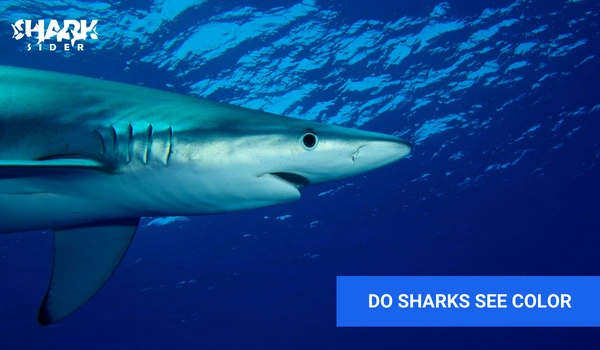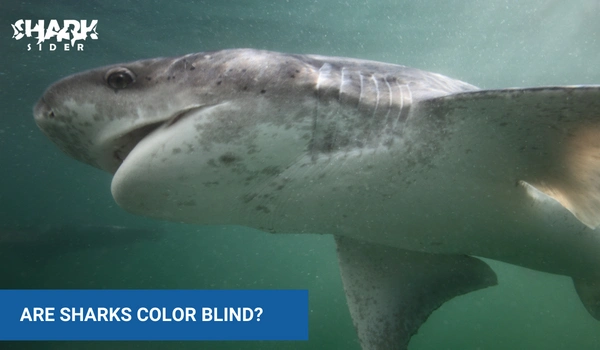Are sharks color blind? Do sharks really see in black and white? Or can they actually perceive the colors of their aquatic environment? This question has intrigued marine biologists for centuries, and there is still no definitive answer to the question “can sharks see color?”. Intriguingly, recent scientific studies have revealed some fascinating insights into the vision capabilities of these ancient predators. In this blog post, we will explore the current research on shark color blindness and its implications for understanding their behavior in naturalized settings as well as uncovering potential conservation strategies that could protect these iconic creatures.
Are sharks color blind?
Sharks have been found to possess only two types of photoreceptors in their retinas, compared to the three found in humans. This design limits the range of colors they can detect in comparison to that which we are able to see. While scientists cannot yet definitively state whether sharks are color blind, experiments conducted on these animals have revealed that they can detect certain wavelengths of light and discriminate between different shades. In particular, sharks have been observed to distinguish between blue and green hues, as well as some other colors.
The contribution of the retina to color vision
The role of the retina in color vision is well understood; it contains two types of photoreceptor cells called rods and cones. Rods are responsible for detecting light levels in dimly lit environments, while cones detect color in brighter conditions. In sharks, the presence of rods has been well established but it is unclear if they can produce color vision.

Research into this area has focused on two primary types of sharks – the Brown-Banded Bamboo shark and the Nurse shark. For the former, a study published in 2016 revealed that they possess five types of cone cells; three short-wavelength cones and two long-wavelength cones. This suggests that this species may be capable of perceiving some colors, especially in brighter environments.
The Nurse shark was found to have four types of cone cells; two short-wavelength cones and two long-wavelength cones. However, the presence of these cells did not necessarily indicate that the Nurse shark could see color. Further research is required to determine if do sharks see color in their environment or simply distinguish between light and dark.
Given the unique characteristics of their vision, it is no surprise that sharks often rely on their sense of smell to locate food sources in murky waters. While their eyes may be able to detect certain colors, the low light levels often encountered in the depths of the ocean mean that odor and sound become much more important for locating prey.
Ultimately, more research is needed to understand the full scope of shark color vision. As our knowledge increases, however, it is becoming increasingly clear that these predators possess a surprisingly acute visual system and can detect subtle differences in their underwater environment. By further elucidating the nuances of this enigmatic capability, we may unlock new insights that could aid in conservation efforts for these remarkable creatures.
Conclusion
So, do sharks see in color? It appears that the answer is still unclear. However, the research conducted thus far suggests that some species of sharks may possess limited color vision, although the magnitude of this capability remains unknown. With further study and exploration, it is possible that we could gain a better understanding of how shark color vision works and use this knowledge to develop better conservation strategies for these unique creatures.

